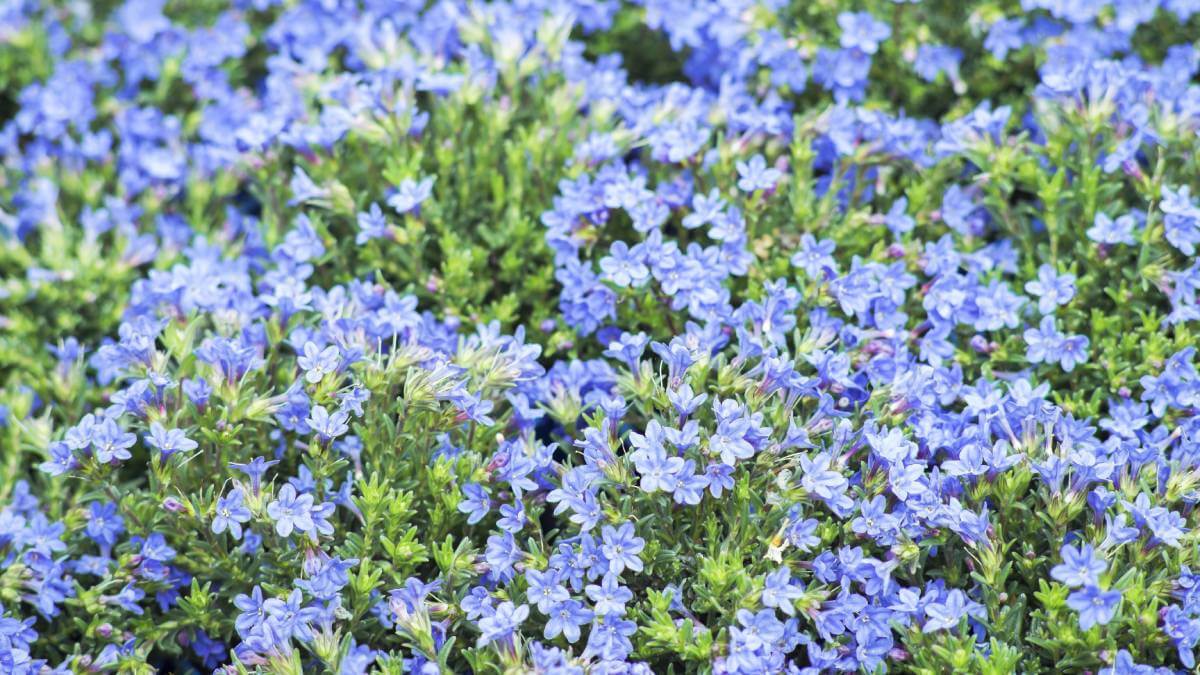Lawns have been a prized fixture in Australian gardens since European settlement. Many people take huge pride in the sight of their perfectly manicured lawn, but they have come under fire recently for their impact on the environment.
The things needed to keep a lawn maintained such as high water consumption, the use of pesticides, and the gas emitted from mowing, are all factors that have a significant impact on the environment.
It can be hard to maintain a perfectly manicured grass lawn. It can wear out under excessive foot traffic, resulting in those unsightly brown patches in your backyard or the emergence of makeshift paths through taller grass.
Walkable ground cover plants won’t entirely substitute pathways and lawns, but they are great for filling in gaps and covering challenging areas where other plants struggle to thrive. Whether it’s a dry, sun-drenched spot or a shady, damp corner, there are specific ground cover plants that are well-suited for walking on.
Here are seven options to transform your paths and lawn.
Pennyroyal
- Best for: damp, shady areas
- Height: 20cm
- Spread: 40cm
Creeping pennyroyal, belonging to the mint family, possesses the familiar minty aroma that is released when its leaves are crushed. This plant’s spreading nature makes it an excellent choice as a walkable substitute for lightly trafficked lawn areas, allowing you to enjoy its delightful scent underfoot.
While it may not thrive in sunny conditions, creeping pennyroyal loves damp and shady locations, reminiscent of its natural habitat in boggy waterside areas. Furthermore, this plant serves as a beneficial resource for pollinators, with its small flowers becoming an additional attraction during the late summer season.
Thyme
- Best for: dry sunny areas, between paving
- Height: 10cm
- Spread: 30cm
Creeping thyme grows well in Australia and requires very little ongoing care, other than a trim once a year, and a little water to help see it through extreme drought.
One notable characteristic shared by all thyme varieties is their resilient leaves, which emit a fragrant aroma when stepped upon. Additionally, their dainty, vibrant summer flowers act as irresistible magnets for bees and other pollinators, further enriching your garden.
For areas with consistent yet light foot traffic, there are several recommended choices. The grey-green woolly thyme (Thymus pseudolanuginosus) stands out with its slightly fuzzy leaves and stems, providing an appealing texture. The pink-flowering Thymus coccineus is another excellent option.
Chamomile Nobile
- Best for: small, lawned areas
- Height: 15cm
- Spread: 30cm
This is an informal and pretty garden plant that goes well in borders, rockeries and larger planters.
There is a dwarf or prostrate variant that can be grown as a lawn – it has the added benefit of emitting a wonderful fragrance when walked over, though it tends to not be very hard-wearing.
This charming herb forms a lush carpet of leaves adorned with daisy-like flowers during the summer season. When gently crushed, it releases its unique and sweet scent reminiscent of honey. Chamomile thrives best in well-drained soil with sufficient moisture, creating ideal growing conditions. Moreover, you have the added benefit of harvesting the flowers for brewing a soothing cup of tea.
Soleirola Solerolii
- Best for: shady, damp and stony areas
- Height: 10cm
- Spread: 90cm
Also known as ‘baby’s tears,’ this resilient plant has a knack for spreading rapidly through stony and damp areas in deep shade.
Once established, soleirolia presents a charming and vibrant green option for shaded areas, serving as an attractive alternative to traditional lawns. However, it should be noted that it is not suitable for heavy foot traffic. Often challenging to find and occasionally sold as an indoor plant, if you happen to come across this plant in your neighbour’s garden, it might be worth asking if you can take a cutting and cultivate it.
Ajuga Reptans
- Best for: part shade, edging paved areas
- Height: 15cm
- Spread: 30cm
Bugleweed, recognised for its enchanting dark bronze foliage, introduces an element of fascination to garden borders, proving to be an exceptional option for defining garden edges alongside walkways, outdoor seating areas and driveways. Besides lending a softening touch to the sharp lines of hardscaping elements, it also withstands moderate foot and vehicular traffic.
This plant tolerates both shaded environments and dry soil conditions. However, it flourishes in slightly damp, partially shaded areas.
Corsican Mint
- Best for: edging paths
- Height: 7cm
- Spread: 30cm
This Mediterranean plant thrives in areas with partial shading and generous moisture. In favourable conditions, its small leaves rapidly create a carpet-like covering on the ground. In summer, charming purple blossoms bloom, adding an extra layer of charm to the plant, and complementing its mint-scented foliage.
Although it can endure light foot traffic, it is ideal for planting in the gaps between paving stones. However, it’s important to note that this plant grows quickly, meaning it has the potential to dominate the garden
Lithodora diffusa
- Best for: dry areas, xeriscaping
- Height: 15cm
- Spread: 45cm
Lithodora diffusa is widely used as a ground cover plant. The foliage is a deep green, dense and mat-forming, with intense true blue flowers smothering the spread of dark green leaves during spring. Popular as a ground cover, it is ideal for underplanting taller shrubs or growing in a container.
It thrives when planted in gravel gardens, paths and driveways, as it gracefully spreads and adds a burst of vivid blue through its star-shaped summer flowers. The dense foliage, reminiscent of rosemary, contributes a dark green hue to the overall display.
Do you have an alternative lawn? What ground cover plants do you have in your garden? Let us know in the comments section below.
Also read: Gardeners share how to make the most of your lawn

